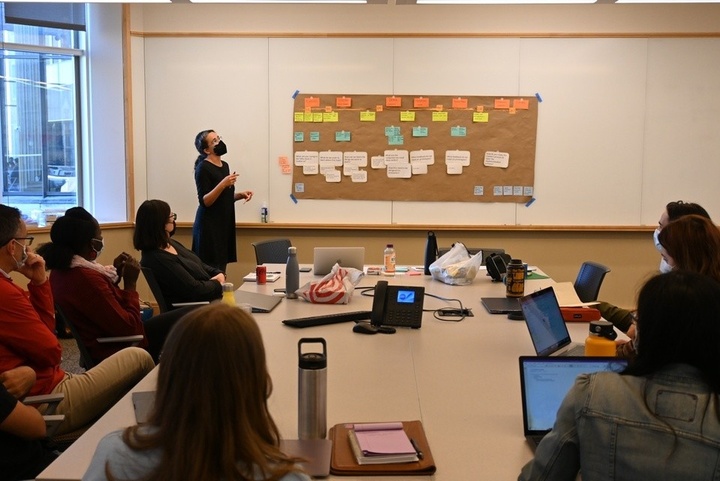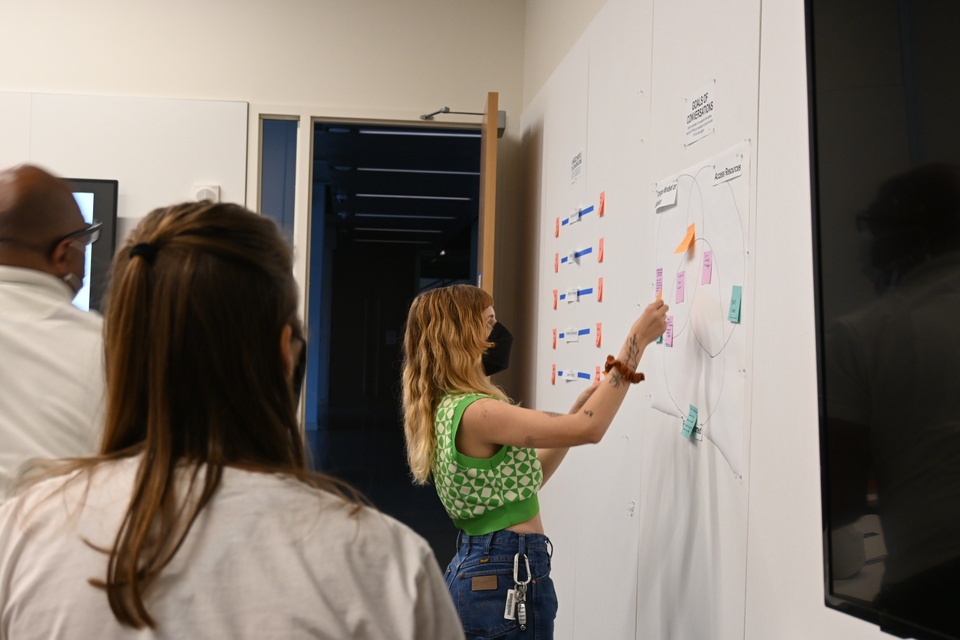Co-Creation Project
This project builds on the Health Communication Research Lab’s (HCRL) and the Health Communication Design Studio’s (HCDS) prior rapid response efforts. The team sought to establish a co-creation system to engage community members in rapid-cycle, iterative development and testing, with a goal of more quickly creating communication materials that are more relevant and effective for St. Louisans. The Co-Creation pilot project’s aim was to extend the expertise of people with lived experience of the topic area earlier in the creative process.
Project Description
Over the course of several months, the Co-Creation panel participated in a variety of activities, from virtual and in-person workshops to surveys and asynchronous exercises, centered on creating a tool to prompt conversations between teens and adults. The topic, focusing on teens, mental health, and identity (particularly gender and sexuality), emerged from conversations with HCRL’s partners across the St. Louis region. A close collaborator on this project included the Public Design Bureau who facilitated workshops, lead team brainstorms, and documented the entire process.
goals of the project
- Understand the feasibility of a co-creation approach and its value in creating health communication messages
- Pilot a co-creation process using a topic and team that is relevant to people in the St. Louis region
- Develop infrastructure and tools that can support the future use of co-creation at HCRL and HCDS

HEAR FROM THE PROJECT PARTNERS & PARTICIPANTS
Co-creation can be a powerful and flexible process to invite people with lived experience into design planning and decision making. It takes time and thoughtful, intentional collaboration but it yields design results that are more nuanced and tailored to communities.
Having a final product that looks like what we talked about for the last few months … seems satisfying as a participant […] Communication and showing there’s follow-through are key things.”
Project Timeline

Planning
In the first two phases, the team identified potential topics and their context; established timeline of activities; and got IRB (Institutional Review Board) approval.

Recruitment
The team recruited 8 panelists from the community, including five adults who work closely with LGBTQIA+ teens, and three recent high school graduates, some of whom identify as LGBTQIA+ or have LGBTQIA+ teens in their community

Discovery
The co-creation team narrowed the focus of the project; conducted activities including one-on-one conversations, anonymous surveys, and review of current resources; then synthesized insights.

Ideation
In this phase, the team generated ideas; decided how to prioritize ideas; and refined those ideas.

Prototyping
In this phase, ideas are turned into more tangible products: prototypes went from lo-fidelity to hi-fidelity; prototypes were tested with others; and feedback was documented for improving prototypes.

Refinement
At the end of the project, the team created final versions of the design solution; explored various distribution methods; and continued open communication channels.
Co-Creation Frameworks

How are topics broken down?

Is co-creation a good fit for a project?

How much capacity is needed for co-creation?

What co-creation structures are there?

What should the new project focus on?






























































